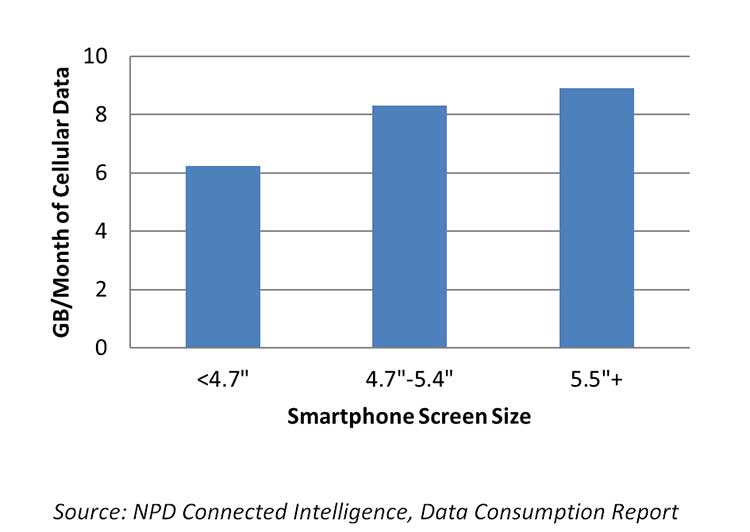As Apple’s annual September launch event draws closer, hearsay around device specs continues to swirl. When it comes to this year’s iPhone news, form factor sizing has risen the ranks to the most heavily speculated aspect. Assuming what is being reported is true, Apple is expected to debut devices on Wednesday with bigger screen sizes, which means accessory manufacturers are busy designing new peripherals.
This move should not come as too much of a surprise, as consumers have clearly indicated a desire for bigger form factors that boost the user experience. In fact, from 1H 2015 to 1H 2018, the most common smartphone screen size sold in the U.S. went from 4.7 inches to 5.5 inches, according to NPD’s Mobile Phone Track.
In 2015, 37 percent of U.S. smartphone owners were using a device with a screen size smaller than 4.7 inches. Since then that number has fallen to 15 percent during the first half of 2018. Over the same timeframe, unit share of devices with a screen size from 5.5 to 6.2 inches has grown from 21 percent to a whopping 44 percent. The increase in adoption of smartphones with large displays is welcome by OEMs, as it allows them to charge a premium in a landscape where high margins are becoming the only way to offset volume declines, driven by the increase in the length of the smartphone upgrade cycle.
That said, the picture is not as rosy for carriers, as large screens put an extra burden on their networks. According to NPD Connected Intelligence’s Data Consumption report, smartphone screen size has a direct correlation to the amount of data used. During the first half of 2018, consumers using smartphones with a screen size of 4.7 inches or less used approximately 6 GB/month of cellular data. Monthly data usage jumped to 9 GB/month for users with a screen size of 5.5 inches or larger.

This increase is driven by usage of devices with larger screens for media consumption, video calling, and social media activity. In fact, video-related activities (apps, WebLink streams, etc.) account for slightly over 80 percent of total data traffic generated on cellular and Wi-Fi networks. It’s safe to assume that the Apple’s new models (as well as models from other OEMs) with large displays will continue to foster the video streaming behavior and add more pressure on carrier networks.
Over the years, advancements in hardware design, such as omitting bezels, have allowed OEMs the opportunity to provide bigger screen real estate in a relatively smaller chassis. Apple set the industry standard with their notched design, now being implemented in most of smartphone OEMs’ flagship portfolios. But, this is only the beginning, as other OEMs (specifically, Samsung) are now teasing the next evolution in screen technology – foldable displays. Frequent attendees of industry tradeshows such as CES and MWC will recall the (once) futuristic concept designs, but it appears 2019 will mark the commercial introduction of smartphones boasting foldable displays. So while bigger does appear to be better in smartphone screens, it seems this is only the beginning…